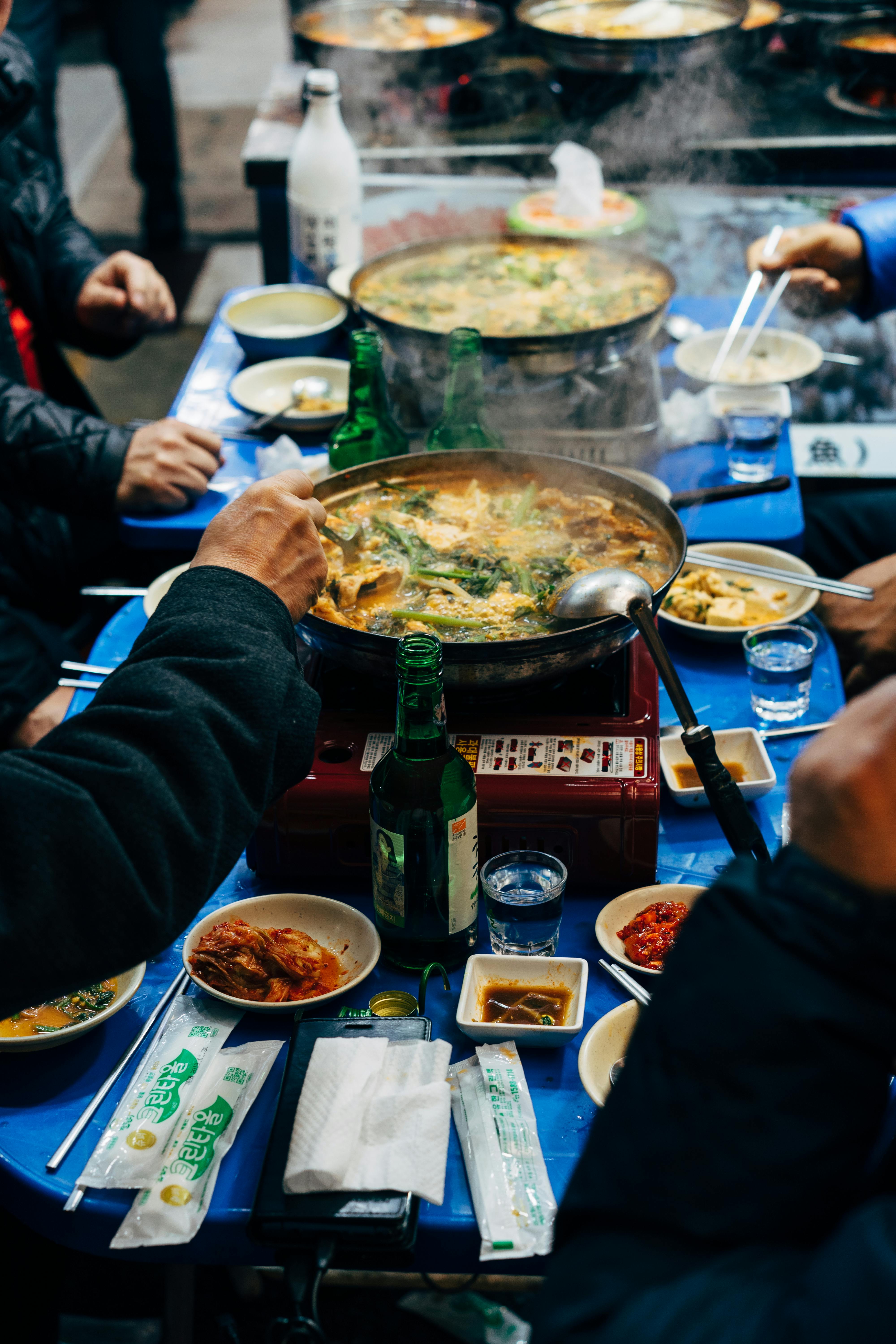Welcome to the World of Traditional Dining Customs: A Guide to Respectful Eating Abroad
Traveling to different countries allows us to experience new cultures, traditions, and of course, their unique cuisines. However, it’s important to remember that dining customs vary widely across the globe. To avoid any unintentional faux pas and show respect to the local culture, it’s crucial to have some knowledge of the traditional dining customs of the country you’re visiting.
In this blog post, we present a comprehensive guide to traditional dining customs, providing you with valuable insights on respectful eating abroad. By understanding the traditions and etiquette associated with each culture’s dining practices, you can ensure that you not only enjoy your meal but also make a positive impression on the locals.
From Asia to Europe, Africa to the Americas, each region has its own set of dining rituals, table manners, and traditions. Whether it’s the use of chopsticks in China, the importance of sharing food in Ethiopia, or the formalities of a French dining experience – we’ll cover it all!
By delving into the intricacies of each country’s customs, you’ll gain a deeper appreciation for their culture and forge meaningful connections with the locals. Understanding how to properly navigate a traditional meal will not only enrich your travel experiences but also showcase your respect for the host country’s heritage.
So, sit back, prepare your taste buds, and join us on this culinary exploration as we dive into the world of traditional dining customs. From the dos and don’ts to the hidden meanings behind certain gestures, get ready to embark on a journey where food, culture, and respect intertwine.
Stay tuned for our upcoming blog posts, where we’ll take you on a gastronomic adventure through various countries, one meal at a time. In the meantime, pull up a chair and get ready to savor the rich flavors of traditional dining customs worldwide.

What are the key aspects of traditional dining customs around the world?
In this fascinating guide, we explore the diverse and rich traditions of dining customs across various cultures. From Asia to Europe, from Africa to the Americas, each region has its own unique practices that contribute to a truly immersive dining experience. Understanding and respecting these customs is not only a way to show appreciation for the local culture but also a means of fostering meaningful connections and avoiding unintentional faux pas. So, let’s delve into the rich tapestry of traditional dining customs and discover how you can navigate them with grace and respect.
Our journey begins by unraveling the basic tenets of dining customs and the significance they hold in different societies. We will explore the intricacies of table manners, seating arrangements, and proper etiquette. By embracing these customs, you can enhance your dining experience and forge deeper connections with locals.
Moving forward, we will take a closer look at the specific customs prevalent in various regions. From the elaborate tea ceremonies in Japan to the communal style of dining in Ethiopia, each country possesses its own unique traditions that add flavor and depth to the dining experience. By understanding and embracing these customs, you can fully immerse yourself in the culinary delights of different cultures.
Furthermore, we will also discuss the importance of cultural sensitivity when dining abroad. Being aware of the customs and traditions of your host country is crucial in order to avoid causing offense or misunderstanding. By demonstrating respect and adapting to local practices, you can create a positive and harmonious dining experience for both yourself and your hosts.
So, join us on this insightful journey as we explore the world of traditional dining customs. From understanding the significance of gestures to appreciating the symbolism behind certain foods, this guide will equip you with the knowledge and understanding needed to partake in respectful dining experiences across the globe. Stay tuned for our next installment, where we will delve deeper into the specifics of traditional dining customs in different countries.

Traditional Dining Customs: A Guide to Respectful Eating Abroad
When traveling to foreign countries, it is important to familiarize yourself with the local customs and traditions, especially when it comes to dining. Respectful eating abroad requires understanding the cultural norms and behaving in a way that shows appreciation for the local traditions. Here, we present a guide to traditional dining customs from around the world, giving you valuable insights into the proper etiquette to follow.
Africa
In many African countries, dining is often a communal experience centered around sharing a meal with family and friends. It is customary to eat with your right hand, as the left hand is considered unclean. Before starting the meal, it is polite to wait for the host or oldest person present to begin eating. In some cultures, it is also common to eat from a shared plate, emphasizing the importance of togetherness and unity.
Asia
Asian countries have diverse dining customs that vary from nation to nation. In China, for example, it is customary to place your chopsticks parallel to your body when you are finished eating. Crossing them is seen as disrespectful. In Japan, using chopsticks to pass food directly from one person to another is considered taboo. Instead, it is best to use serving utensils for this purpose.
In India, it is polite to eat with your right hand, just like in many African countries. However, unlike in Africa, using your left hand to pass food or touch communal serving dishes is considered impolite. Also, remember to leave a small amount of food on your plate to show that you are satisfied, as finishing everything may lead to additional servings being offered.
Europe
In European countries, dining customs can vary significantly depending on the region. In France, it is considered impolite to start eating before everyone at the table is served. Additionally, resting your hands on your lap is seen as more polite than placing your elbows on the table. In Italy, on the other hand, it is not uncommon to rest your hands on the table while talking between courses.
When dining in Russia, it is customary to keep your hands visible at all times, as hiding them under the table is considered suspicious. It is also polite to finish everything on your plate as a sign of appreciation for the meal. Lastly, in the United Kingdom, it is common practice to hold the fork with the left hand and the knife with the right hand while eating, unlike in the United States where many people switch hands.
Latin America
Latin American countries have a rich culinary heritage, and their dining customs reflect this vibrant culture. In Mexico, for instance, it is polite to keep your hands visible during the meal, much like in Russia. It is also common to have a toast before eating, with tequila or mezcal being the beverages of choice.
In Brazil, it is essential to wait for the host to start the meal before you begin eating. Additionally, it is polite to keep your hands above the table at all times, as resting your elbows on the table is seen as rude. In Argentina, on the other hand, it is customary to keep your hands on the table, especially during lively conversations.
Statistics show that nearly 70% of travelers feel more confident exploring international cuisines when they know and respect local dining customs. Understanding and practicing traditional dining customs not only helps you navigate unfamiliar culinary traditions but also shows respect for the local culture. So, the next time you embark on a culinary adventure abroad, take the time to learn about and embrace the traditional dining customs of your destination.

Conclusion
In conclusion, understanding and respecting traditional dining customs abroad is essential for a culturally immersive experience. Throughout this article, we explored various important aspects of traditional dining customs, highlighting the significance of etiquette and respect when partaking in meals in different countries.
One key message that emerged is the importance of observing local customs and traditions, such as table manners, seating arrangements, and mealtime rituals. It is crucial to familiarize oneself with these practices before embarking on a culinary adventure abroad. By doing so, travelers can avoid inadvertently causing offense or disrespecting local traditions.
Another key insight discussed in this article is the appreciation of food as a symbol of culture and identity. Traditional dining customs often reflect the values, history, and traditions of a particular region or country. By engaging in these customs, individuals can gain a deeper understanding of the local culture and forge connections with the people they encounter.
Furthermore, we also explored the role of communication and non-verbal cues in dining experiences. Being mindful of body language, gestures, and facial expressions can help establish positive interactions and foster warm relationships with hosts and fellow diners.
By embracing cultural diversity and adopting an open-minded approach to dining customs, travelers can enhance their gastronomic journeys and forge memorable connections with people from different backgrounds.
In essence, by respecting and appreciating traditional dining customs, we can not only avoid cultural faux pas but also unleash the true essence of immersive travel experiences – connecting with others on a deeper level through the universal language of food. So, go forth and explore the world’s dining traditions with an open heart and a respectful palate. Bon appétit!




